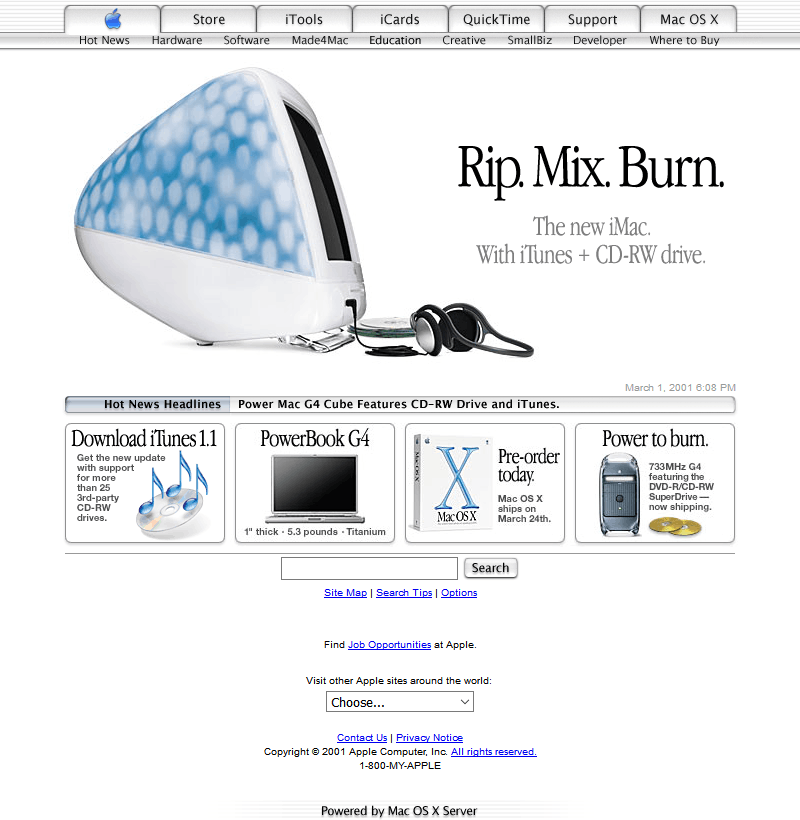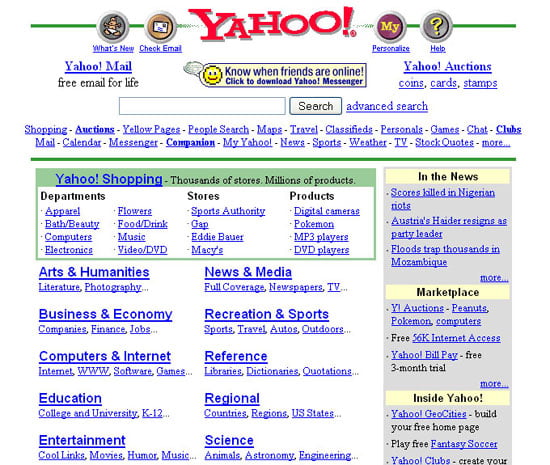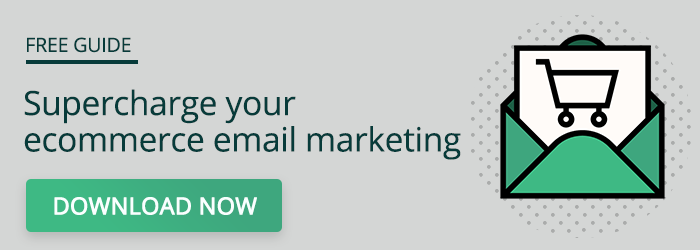How to Tell it's Time for a Website Redesign

Keeping up with the latest and greatest in web design can be a daunting task, but change isn't always as tough as it looks. Here's how to tell if your site is due for an update.
Do you remember when the biggest and best websites looked like this?



Yeah — really.
It's hard to fathom that that level of quality was once considered "great design," but it was. While sites of this caliber would never stand up against the optimized, interactive, engaging websites of today, they were quite advanced for their time.
It just goes to show that web design is constantly changing. (This is mostly because buying habits, user expectations, and devices are changing.) Consequently, keeping up with the latest and greatest in web design can be a daunting task. While there are valid challenges to consider as you work to keep pace with the crowd, consider that change isn't always as tough as it looks.
It only takes a moment to assess your website and quickly determine whether or not you're in need of a redesign. To be sure your site is as successful as possible, here are are few things to lookout for:
Signs Your Website Might be Due for a Redesign
Low or Poor-Quality Traffic
If you're struggling to get visitors to your site, it's probably for a reason. Whether the user experience is outdated (more on that later) or your SEO needs work, take some time to identify the issue(s) causing a lack of traffic. To start, improving your website's layout and creating better content can help solve this problem. Additionally, you may not be promoting your site enough. For starters, make sure you're using social media, and pending your budget, run paid ads across Google and social media.
In some cases, you may have plenty of traffic, but the wrong kind. Maybe you're struggling to convert visitors to leads, or maybe misleading content is pulling in an audience that actually has no use for what you have to offer. Asses the quality of your traffic; don't assume that high numbers mean success.
Lack of Search Engine Optimization
As mentioned above, SEO goes a long way toward improving user experience on your website and in converting traffic. If you rely on outdated SEO practices like keyword stuffing or have failed to optimize your site overall, you're sorely missing the mark of a successful online business, and your traffic will show it. And remember, SEO doesn't have to be complicated.
[Thinking about a new website? Check out these 25 must-haves for driving traffic, leads, and sales.]
Irrelevant Content
Outdated content, much like outdated layouts, sends the wrong message to visitors. If someone who knows what they're looking for stumbles across your site full of unrelated and outdated data, it'll look just as ridiculous to them as the obsolete webpage screenshots above look to you.
Assess your content's tone, too. Self-promotional content is outdated and passe; if your site is just an echo chamber of you hawking what you have to offer, consider a content overhaul. These days, educational, informative, helpful and customer-centric content is the way to go.
These days, educational, informative, helpful and customer-centric content is the way to go.
Few or No Inbound Links
Inbound links are a fantastic way to push traffic towards your site. Putting in the time and effort to build links back to your site on reputable websites improves your organic search presence—and that's essential to maintaining a presence online.
Poor User Experience (UX)
No one single factor contributes to poor user experience (UX), it's usually a combination of problems. Review the issues we've discussed thus far (and cover below). Imagine you're trying to navigate your website as a first-time visitor. Can you find the information you're looking for easily? If you sell products online, can you search for what you need, add it to a cart and check out seamlessly? Do you enjoy using your website?
If it's difficult to envision how a visitior feels when they visit your site, consider the screenshots from the beginning of this post one more time. Imagine you were trying to navigate those websites and find meaningful information relevant to your life today.
Could you do it?
Maybe. Probably not, though; and even if you could, would you have a good time doing it?
That answer is a little more clear.
If your website is a hassle to navigate, full of meaningless content, or is stuffed to the brim with keywords, it means you're offering site viewers an incredibly poor UX. Savvy marketers know that UX is the most critical component to conversion; if you're lacking in that area, a site overhaul is a must.
Savvy marketers know that UX is the most critical component to conversion; if you're lacking in that area, a site overhaul is a must.
No Compelling Call-to-Action
Maybe you're getting traffic and maybe your content is optimized enough that you know most of the people visiting your site are a part of your target audience. If you're still struggling to convert that traffic and make sales, take a look at your call-to-actions (CTAs).
A compelling CTA explains to consumers why they should take an action. Common examples include language that encourage visitors to contact you or purchase a product, and push them towards doing so without being explicitly sales-y. Quality CTAs are paramount for conversions.
Dated Design
You likely had a pretty visceral reaction when you saw the antiquated webpages above. Why would visitors to your site react any differently if they were greeted by stale, outdated graphics and design? If your website is laden with generic stock photos, carousel sliders, and messy fonts in odd color combinations, it's time for some healthy reassessment. Remember — more often than not, your website is your potential customer's first impression of your business. You definitely want to be sure it's a good one.
Lack of Mobile Responsiveness
When site operators fail to optimize their site to be mobile-friendly, they lose out on valuable traffic and drop in search engine rankings. Google now factors mobile optimization into their search engine rankings, so it's critical that this factor is addressed ASAP.
The average consumer spends over five hours a day on their smartphone; these users account for up to 70% of all web traffic. If you aren't catering to them, you're missing out.
Poor or Dated Content Management System (CMS)
A CMS is a software application (and its related programs) that help create and manage digital content. If you rely on a CMS to curate and present your content, make sure that you're utilizing a well-established platform with modern success.
WordPress and HubSpot are two of today's most frequently-utilized CMS resources. Relying on a CMS can help "gamify" the lead generation process through innovative and interactive methodologies designed to get consumers interested in your content, products, and services. In addition, leveraging a CMS can make editing, maintaining, and updating your website much easier than it is already.
If you're interested in learning more about how to improve your digital marketing efforts with a site overhaul, contact our team today. We have extensive experience in improving user experience, increasing traffic, and helping you take advantage of the tools and resources available to you in order to maximize your growth.
Steven Carter is Ascend Inbound Marketing's Creative Director. He offers our clients clean, smart and effective communication solutions through graphic design and creative direction. Read more about Steven and the Ascend team here.

